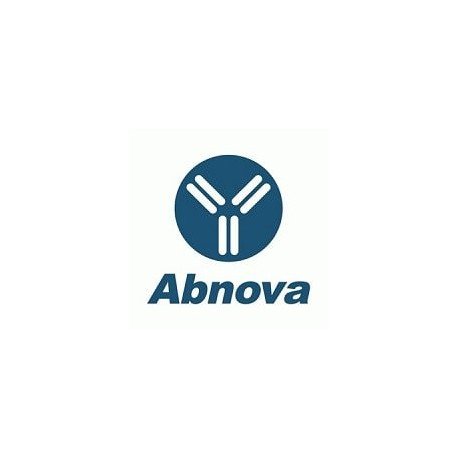Cart 0 Product Products (empty)
No products
To be determined Shipping
0,00 € Total
Prices are tax excluded
Product successfully added to your shopping cart
Quantity
Total
There are 0 items in your cart. There is 1 item in your cart.
Total products (tax excl.)
Total shipping (tax excl.) To be determined
Total (tax excl.)
Data sheet of LST1 monoclonal antibody, clone LST1/02
| Brand | Abnova |
| Product type | Primary antibodies |
| Reactivity | Human |
| Host species | Mouse |
| Applications | IP,ICC,WB-Ce |
More info about LST1 monoclonal antibody, clone LST1/02
| Brand: | Abnova |
| Reference: | MAB6480 |
| Product name: | LST1 monoclonal antibody, clone LST1/02 |
| Product description: | Mouse monoclonal antibody raised against synthetic peptide of LST1. |
| Clone: | LST1/02 |
| Isotype: | IgG1 |
| Gene id: | 7940 |
| Gene name: | LST1 |
| Gene alias: | B144|D6S49E|LST-1|MGC119006|MGC119007 |
| Gene description: | leukocyte specific transcript 1 |
| Immunogen: | A synthetic peptide (conjugated with KLH) corresponding to human LST1. |
| Immunogen sequence/protein sequence: | SSEGPDLRGRDKRGT |
| Form: | Liquid |
| Recommend dilutions: | The optimal working dilution should be determined by the end user. |
| Storage buffer: | In PBS, pH 7.4 (0.09% sodium azide) |
| Storage instruction: | Store at 4°C. Do not freeze. Aliquot to avoid repeated freezing and thawing. |
| Note: | This product contains sodium azide: a POISONOUS AND HAZARDOUS SUBSTANCE which should be handled by trained staff only. |
| Product type: | Primary antibodies |
| Host species: | Mouse |
| Antigen species / target species: | Human |
| Specificity: | This antibody reacts with an extracellular epitope of LST1, an approximately 6-11 KDa protein expressed as various transmembrane or soluble forms. It migrates on SDS PAGE gels asapproximately 25-28 KDa molecule. |
| Reactivity: | Human |
| Application image: |  |
| Application image note: | Western Blotting analysis (non-reducing conditions) of LST1 in whole cell lysate of U-937 (human Caucasian histiocytic lymphoma cell line). Lane 1 : Immunostaining with Isotype mouse IgG1 control. Lane 2-3 : Immunostaining with LST1 monoclonal antibody, clone LST1/02 (Cat # MAB6480), two independent batches. Note : It migrates on SDS PAGE gels as approximately 25-28 KDa molecule. |
| Applications: | IP,ICC,WB-Ce |
| Shipping condition: | Blue Ice |
| Publications: | Functional analysis of B144/LST1: a gene in the tumor necrosis factor cluster that induces formation of long filopodia in eukaryotic cells.Raghunathan A, Sivakamasundari R, Wolenski J, Poddar R, Weissman SM. Exp Cell Res. 2001 Aug 15;268(2):230-44. |


